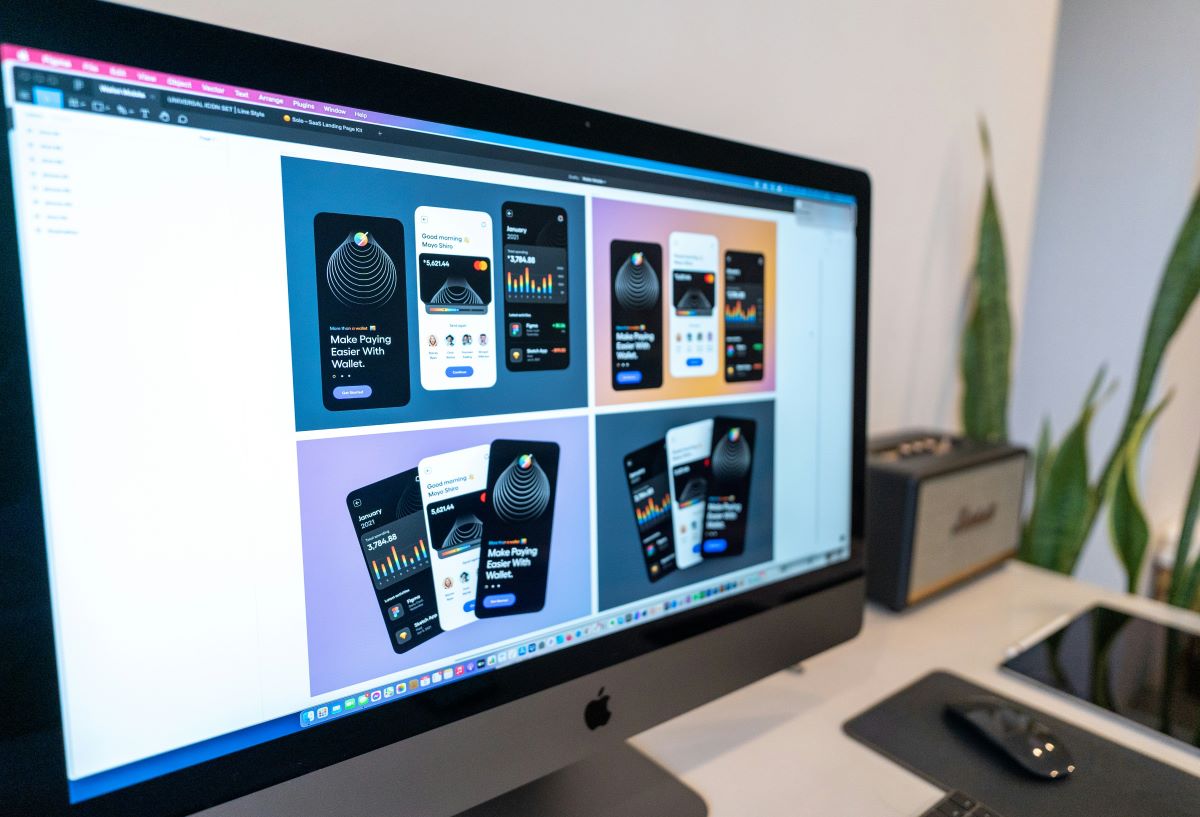

The Role of Graphic Designers in Developing Brand Identity for Media Productions
Industry Insights Sep 16, 2024 • 10 min read
Words by -
With globalization and the fast evolution of technology, it’s important to stay ahead of your competitors. But how do you do that when all of the businesses are all on the same battleground, trying to get on the For You Page of every user on social media and capture their attention within that five-second window? So how do you capture the attention of that one group of consumers that you and you're battling over with hundreds of other companies?
That’s where a Graphic Designer comes in.
the role of a graphic designer is increasingly important for businesses aiming to differentiate themselves and leave a lasting impact. Graphic designers function as more than just artists; they serve as strategic partners in shaping the visual communication that portrays a company's message and brand principles. Their responsibilities span a wide spectrum, from designing captivating logos to developing cohesive branding materials that extend across print, digital platforms, and product packaging. This diverse role demands a deep comprehension of design fundamentals, proficiency in industry-standard software, and the skill to transform abstract concepts into visually compelling graphics.
In this blog, we will delve into the numerous duties that define a graphic designer’s role, emphasizing their contribution to establishing and upholding a brand’s visual identity. We will methodically examine the significance of visual elements such as logos, color schemes, and typography—fundamental aspects of brand identity that graphic designers meticulously create to ensure a uniform and engaging brand presence. Furthermore, we will address the challenges that businesses encounter when seeking and hiring graphic designers, particularly in the context of remote work. Lastly, we will introduce solutions to streamline this process, showcasing how Rubii can facilitate the recruitment and supervision of graphic design talent. This exploration will underline the critical convergence of effective graphic design and successful brand identity, demonstrating how the right visual strategy can propel both recognition and customer loyalty.
What is the Job Role of a Graphic Designer?

Graphic Designers are creative professionals who use visual elements to communicate you company’s message and ideas in a creative, effective, and eye-catching way to capture the attention of the consumers. And have your company’s brand stick. To be a Graphic Designer requires the ability to transform ideas into visually captivating designs that are suitable for various platforms, such as print, digital media, and product packaging.
Graphic designers possess expertise in applying design principles and software to develop visually appealing and practical graphics.
The Responsibilities of Graphic Designers
Graphic designers undertake a range of duties in the execution of their roles. Their key tasks include:
- Conceptualization: Graphic designers commence projects by gaining insight into the client’s requirements and goals. They brainstorm and formulate ideas that align with the project objectives, ensuring that their designs fulfill the intended purpose and target audience.
- Visual Creation: They apply design principles such as color theory, typography, and composition to produce visual assets. These may involve creating logos, brochures, websites, social media graphics, advertisements, and more. The objective is to craft designs that are both visually compelling and effective in conveying the desired message.
- Proficiency in Software: Graphic designers utilize various software tools like Adobe Creative Suite (Photoshop, Illustrator, InDesign), Sketch, and Figma to bring their designs to fruition. Mastery of these tools is vital for generating high-quality visuals and meeting industry standards.
- Brand Uniformity: They ensure that all design work conforms to the client’s brand guidelines. Consistency in visual elements contributes to establishing a coherent brand image across diverse media.
- Collaboration with Clients: Graphic designers collaborate closely with clients to gather feedback and make adjustments. Effective communication is essential for comprehending client needs and delivering designs that align with their vision.
- Project Management: Concurrent management of multiple projects is often part of the role. Designers must adhere to deadlines, manage their time efficiently, and coordinate with other team members or stakeholders to guarantee the timely delivery of design assets.
Graphic Designers play a crucial role in creating visual content that effectively communicates messages and reinforces brand identity. Their role combines creativity, technical skills, and client interaction, all aimed at producing designs that fulfill aesthetic and functional objectives.
What is Brand Identity?

The term brand identity pertains to the assortment of visual and thematic elements that embody a brand and set it apart from others in the market. It includes all visual aspects that communicate the core of a brand, such as its logo, color scheme, typography, images, and overall style. Brand identity goes beyond just a logo or a set of colors; it forms a comprehensive system that establishes a unified visual presence for a brand.
Important Elements in a Brand Identity
- Logo: The logo is often the most identifiable element of a brand identity. It serves as a graphical representation of the brand, designed to be memorable and immediately recognizable. The logo typically incorporates the brand name or an icon that reflects the brand’s values and mission.
- Color Palette: The color palette comprises primary and secondary colors utilized consistently across all brand materials. Colors evoke emotions and can shape perceptions, so choosing a palette that aligns with the brand’s personality is essential.
- Typography: Typography involves the selection of fonts and typefaces used in different brand materials. Consistent use of typography helps strengthen the brand’s identity and ensures readability and coherence across various media.
- Imagery: Imagery encompasses photographs, illustrations, and icons used to complement the brand’s message. The style and tone of imagery should be in line with the overall brand identity and appeal to the target audience.
- Design Elements: These encompass patterns, textures, and other visual motifs contributing to the brand’s distinctive appearance and ambiance. Design elements aid in establishing a unique visual language for the brand.
- Brand Guidelines: Brand guidelines are comprehensive documents that specify how to utilize the various components of the brand identity. They guarantee consistency in how the brand is presented across diverse platforms and materials.
Overall, a brand identity serves as the visual manifestation of a brand’s values, personality, and mission. It assists in establishing a strong and consistent presence in the market, facilitating easier recognition and connection with the brand for consumers.
Why is Creating a Brand Important?

Establishing a strong brand identity doesn't just set your business apart from competitors but also nurtures trust and loyalty among consumers. It includes various visual components like logos, color schemes, typography, and imagery, which all work together to express your brand's essence and convey your values.
For example, a well-designed logo acts as the visual foundation of your brand, while a consistent color palette and font selection create a unified and easily recognizable appearance across all marketing materials.
Templates showcasing these visual elements help maintain your brand's uniformity, whether it's on business cards, social media profiles, or website design. By utilizing these templates, you can present a cohesive image that reinforces your brand's message and enhances its overall influence.
This visual uniformity not only bolsters brand recognition but also establishes credibility, making it simpler for consumers to connect with and remember your business. In short, investing in a carefully crafted brand identity isn't just about looks—it's about developing a compelling visual representation of your brand that resonates with your audience and supports your long-term business objectives.
Challenges in Finding and Hiring a Graphic Designer
Finding the right Graphic Designers
The process of finding and hiring a graphic designer comes with its fair share of challenges, particularly when it comes to remote work. Reviewing resumes alone is not sufficient when there is a vast talent pool, making it difficult to assess a designer's compatibility without face-to-face interactions.
Evaluating Skills and Experience
Evaluating a designer's skills and experience heavily relies on their portfolio and test projects, making it challenging to gauge their proficiency and work process without direct observation.
Productivity and Accountability
Maintaining productivity and accountability with remote graphic designers is a challenge, as it can be difficult to monitor progress and ensure consistent communication without direct supervision. Effective systems and trust are essential in keeping projects on track.
Onboarding
Onboarding a remote graphic designer brings unique challenges, especially in integrating them into the company culture and workflow from a distance.
Equipment Procurement
Providing the necessary equipment for remote graphic designers can be complex, requiring careful planning and communication to avoid disrupting their workflow.
Legal and Contractual Issues
Navigating the legal aspects of remote work involves drafting contracts that address remote work specifics and ensuring compliance with local labor laws.
Looking for a Remote Graphic Designer Made Easy with Rubii

Qualified Remote Graphic Designers Made Easy to Find
Rubii are professional recruiters who makes it easier to find the perfect graphic designer by providing access to a curated pool of top talent. This saves you time and effort by matching you with designers who meet your project requirements.
Assessing Skills and Experience
During the interview screening process, Rubii ensures thorough skill assessments by evaluating candidates' portfolios, conducting interviews, and providing client reviews and ratings for additional assurance.
Productivity and Accountability
Rubii's team management software enhance productivity and accountability by enabling real-time productivity tracking, goal setting, and time management, ensuring that remote designers stay aligned with company standards and project deadlines.
Onboarding
Rubii streamlines the onboarding process for remote designers by using customizable workflows and checklists to automate task assignments and clarify project requirements, reducing integration time and avoiding project delays.
Equipment Procurement
Rubii manages equipment procurement for remote hires by handling requests, approvals, and vendor coordination, ensuring that designers receive the necessary equipment within budget constraints while meeting technical requirements.
Legal and Contractual Issues
Rubii provides standard contracts that cover essential remote work aspects, such as payment terms and intellectual property rights, and navigates international legal requirements to ensure compliance with local and international regulations, protecting both your company and the designer.
With Rubii’s expertise and resources, you can overcome the challenges of hiring and managing remote graphic designers, ensuring a smooth and successful collaboration.
Conclusion
The role of a graphic designer is integral to developing a compelling and cohesive brand identity. A Graphic Designer plays an important part in ensuring consistency and effective communication of a company’s brand and message to the consumers, and does so from the conceptualization stage and during the crafting of visual elements stage. A thoughtfully designed brand identity, with components such as logos, color schemes, and typography, is fundamental for establishing a robust presence in the market and building trust among consumers. Despite the complexities of recruiting and supervising graphic designers, particularly in a remote setting, the utilization of resources and tools like Rubii can simplify the process and improve collaborative efforts. The investment in a strong brand identity and adept graphic designers extends beyond visual appeal; it is about constructing a compelling visual story that aligns with long-term business objectives and nurtures meaningful relationships with the target audience.
Ready to build and enhance your company’s brand identity? Speak with Rubii and start looking for new talent who can assist in finding the right graphic designer to tell your brand’s story. Click here to make contact.

